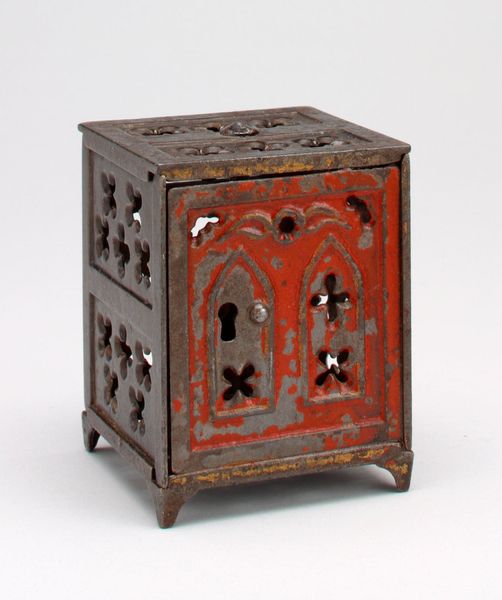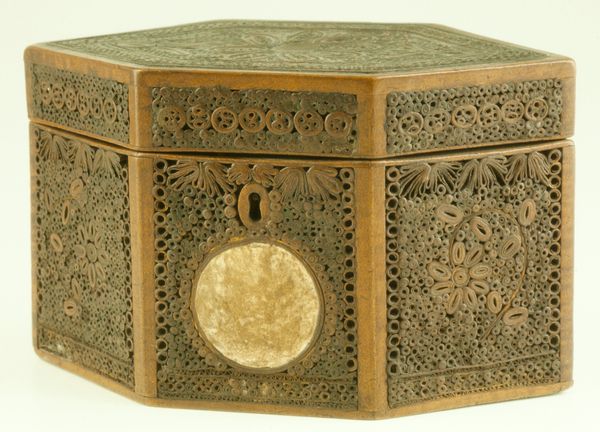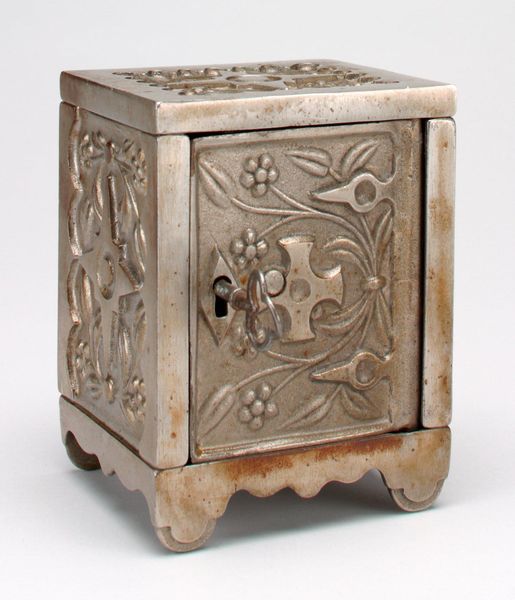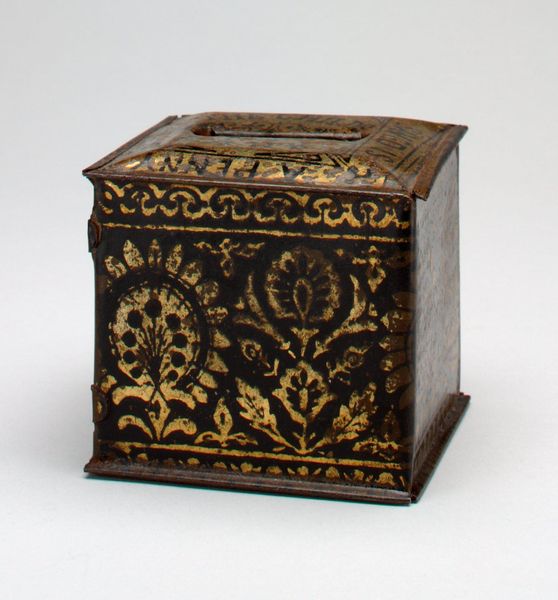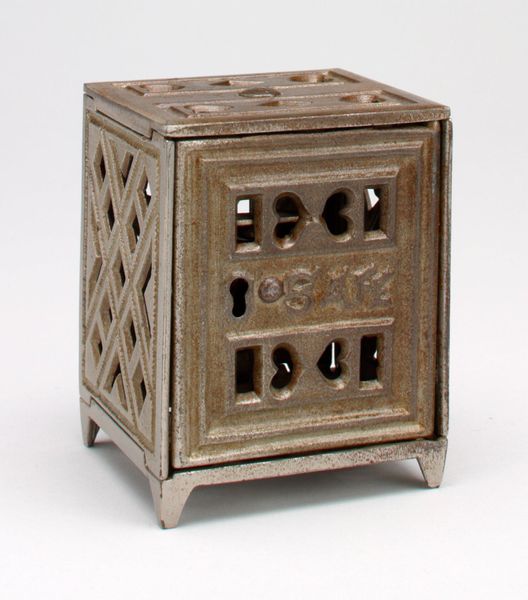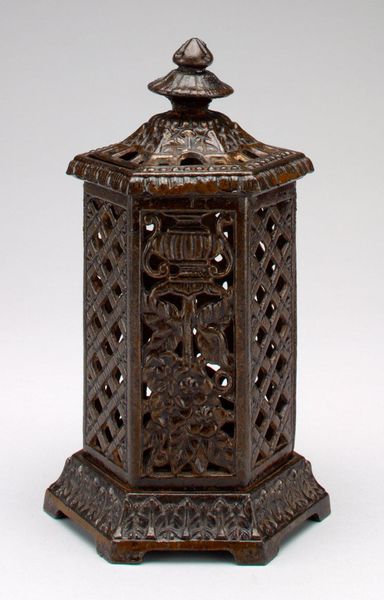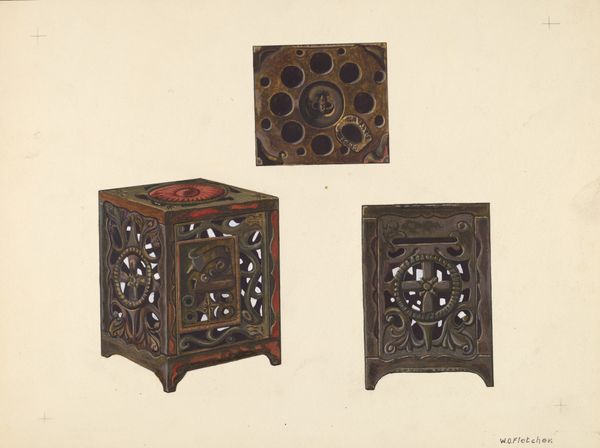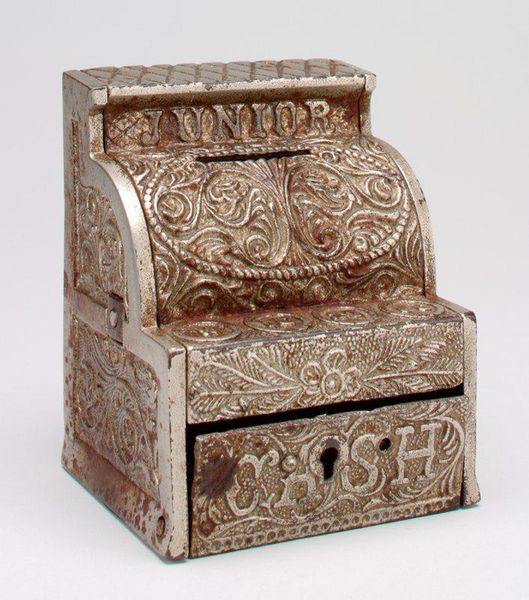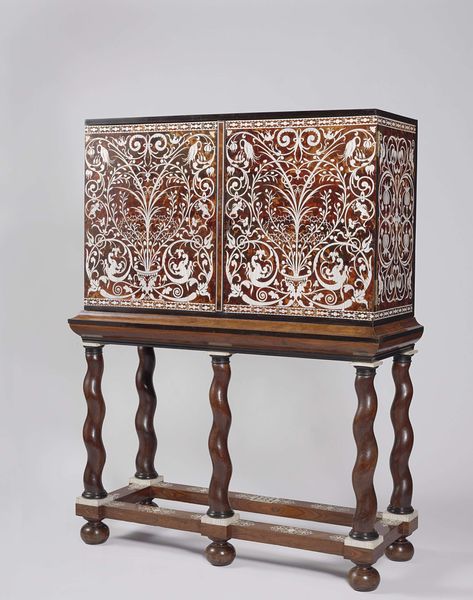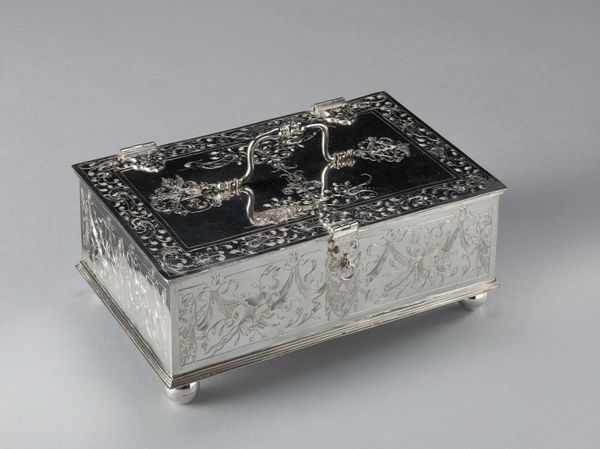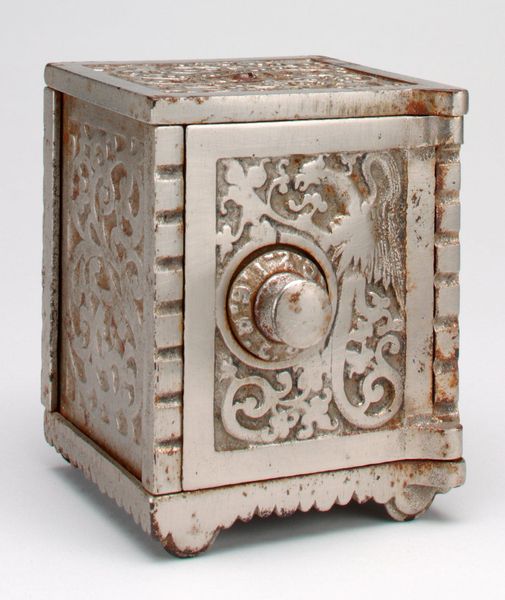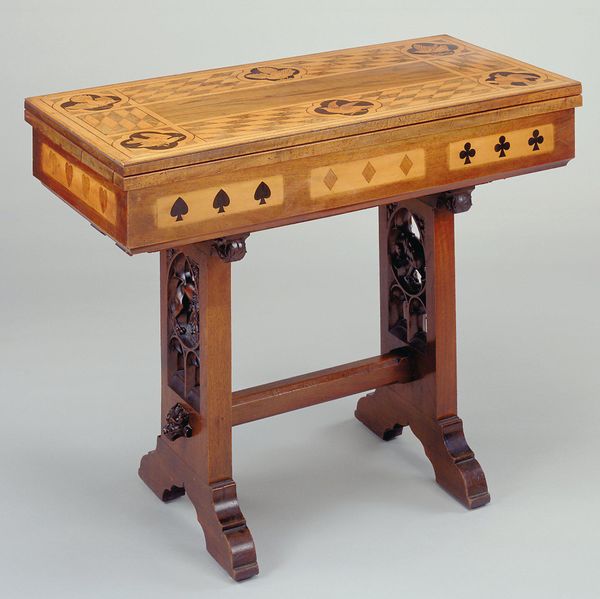
-Save Your Pennies- safe still bank c. early 20th century
0:00
0:00
assemblage, metal, sculpture
#
assemblage
#
metal
#
sculpture
#
sculpture
#
decorative-art
Dimensions: 3 9/16 x 2 11/16 x 2 5/16 in. (9.05 x 6.83 x 5.87 cm)
Copyright: No Known Copyright
Editor: Here we have a metal sculpture called "Save Your Pennies - safe still bank" made around the early 20th century by Kenton Hardware Manufacturing Co. The object has a boxy structure, ornate openwork design on all sides, and looks very worn with age. What visual elements stand out to you in this work? Curator: The rusted surfaces and intricate framework immediately capture the eye. The cube form, raised on delicate legs, displays an intriguing tension between solidity and transparency, which can be understood through structuralist interpretation of symbolic association. Observe how the decorative perforations create an interplay of positive and negative space. How does the rust affect the form's readability? Editor: The rust adds to the visual complexity of the work. I wonder if it might even be a welcome component to highlight the structure. Without it, might this piece be viewed with different appreciation? Curator: Quite possibly. The presence of rust certainly foregrounds issues of decay, impermanence, and material transformation, reminding us that all forms of structure and expression are subject to temporality. I wonder, too, how the inscription ‘Save Your Pennies’ intersects with the filigree ornamentation and structural presence. Does the language of finance modify your perceptions of the overall artwork? Editor: The lettering and its placement make it feel decorative rather than practical. It is presented as part of a visual story, rather than purely instructive or instructive. The details seem to elevate a basic object. Curator: Yes, that intersection of function and aesthetics, of material value and visual rhetoric, presents a number of opportunities to explore how objects communicate cultural ideals through artistic components and aesthetic design. Editor: I now understand how careful observation of the interplay between visual elements—form, surface, decoration—and their transformations allows for decoding more complex meanings within simple artifacts. Curator: Precisely! The key lies in a constant interaction between tangible matter and abstract interpretation, revealing narratives and challenging norms through critical decoding.
Comments
No comments
Be the first to comment and join the conversation on the ultimate creative platform.
